Epibrassinolide
Synonym(s):22R,23R,24R-2α,3α,22,23-Tetrahydroxy-B-homo-7-oxa-5α-ergostan-6-one
- CAS NO.:78821-43-9
- Empirical Formula: C28H48O6
- Molecular Weight: 480.68
- MDL number: MFCD00133310
- EINECS: 639-387-1
- SAFETY DATA SHEET (SDS)
- Update Date: 2024-12-18 14:15:30

What is Epibrassinolide?
Description
Epibrassinolide is a brassinosteroid that can be isolated from various plants and has been shown to decrease toxicity and stimulate healthy plant growth in plants under stress. Epibrassinolide is also reported to be a potential apoptotic inducer in various cancer cells without affecting the non-tumor cell growth. It has also been shown to protect neuronal PC12 cells from 1-methyl-4-phenylpyridinium-induced oxidative stress and consequent apoptosis in dopaminergic neurons.
Chemical properties
White Solid
Chemical properties
The solubility of epibrassinolide in ethanol and DMSO is approximately 3 mg/ml and approximately 5 mg/ml in DMF.
The Uses of Epibrassinolide
Epibrassinolide has been used:
- in Murashige and Skoog (MS) medium to study the cotyledon and shoot length response of Cappelle-Desprez (rht8) and RIL6 (Rht8) plants towards it
- in callus-inducing medium for callus induction
- to induce the expression of the gene leaf inclination 2 (LC2) in rice sampling
The Uses of Epibrassinolide
A plant growth stimulant
What are the applications of Application
Epibrassinolide is a steroidal lactone
Definition
ChEBI: 24-epi-brassinolide is a 2alpha-hydroxy steroid, a 3alpha-hydroxy steroid, a 22-hydroxy steroid, a 23-hydroxy steroid and a brassinosteroid.
Metabolic pathway
Two isomeric metabolites, 25-b- and 26-b-D- glucopyranosyloxy-24-epi-brassinolides, are formed in tomato cell suspension cultures with endogenously applied 24-epi-brassinolide. The two-step metabolic process involves hydroxylation of the side chain at C25 and C26, respectively, followed by glucosidation of the newly formed hydroxyl groups. The ratio between both metabolites is altered by in vivo treatment of the cell cultures with various cytochrome P-450-specific inhibitors, indicating the involvement of two different enzyme systems. Biosynthetically prepared 25-hydroxy-24-epi-brassinolide, reapplied to the cell cultures, is exclusively glucosylated at the 25- hydroxyl group, strongly suggesting regiospecificity of the corresponding glucosyltransferase.
Properties of Epibrassinolide
| Melting point: | 256°C |
| Boiling point: | 633.7±55.0 °C(Predicted) |
| Density | 1.141±0.06 g/cm3(Predicted) |
| storage temp. | -20°C |
| solubility | Chloroform (Slightly), Ethyl Acetate (Slightly) |
| form | Solid |
| pka | 14.27±0.70(Predicted) |
| color | White to Off-White |
| EPA Substance Registry System | 3H-Benz[c]indeno[5,4-e]oxepin-3-one, 10-[(1S,2R,3R,4R)-2,3-dihydroxy-1,4,5-trimethylhexyl]hexadecahydro-5,6-dihydroxy-7a,9a-dimethyl-, (3aS,5S,6R,7aR,7bS,9aS,10R,12aS,12bS)- (78821-43-9) |
Safety information for Epibrassinolide
| Signal word | Warning |
| Pictogram(s) |
 Exclamation Mark Irritant GHS07 |
| GHS Hazard Statements |
H302:Acute toxicity,oral H315:Skin corrosion/irritation H319:Serious eye damage/eye irritation H335:Specific target organ toxicity, single exposure;Respiratory tract irritation |
| Precautionary Statement Codes |
P261:Avoid breathing dust/fume/gas/mist/vapours/spray. P271:Use only outdoors or in a well-ventilated area. P280:Wear protective gloves/protective clothing/eye protection/face protection. |
Computed Descriptors for Epibrassinolide
New Products
4-Fluorophenylacetic acid 4-Methylphenylacetic acid N-Boc-D-alaninol N-BOC-D/L-ALANINOL Tert-butyl bis(2-chloroethyl)carbamate 3-Morpholino-1-(4-nitrophenyl)-5,6-dihydropyridin- 2(1H)-one Furan-2,5-Dicarboxylic Acid Tropic acid S-2-CHLORO PROPIONIC ACID ETHYL ISOCYANOACETATE 2-Bromo-1,3-Bis(Dimethylamino)Trimethinium Hexafluorophosphate (6-METHYL-[1,3]DITHIOLO[4,5-b]QUINOXALIN-2-ONE INDAZOLE-3-CARBOXYLIC ACID 4-IODO BENZOIC ACID (2-Hydroxyphenyl)acetonitrile 4-Bromopyrazole 5,6-Dimethoxyindanone 2-(Cyanocyclohexyl)acetic acid 4-methoxy-3,5-dinitropyridine 2-aminopropyl benzoate hydrochloride 1-(4-(aminomethyl)benzyl)urea hydrochloride diethyl 2-(2-((tertbutoxycarbonyl)amino) ethyl)malonate tert-butyl 4- (ureidomethyl)benzylcarbamate Ethyl-2-chloro((4-methoxyphenyl)hydrazono)acetateRelated products of tetrahydrofuran
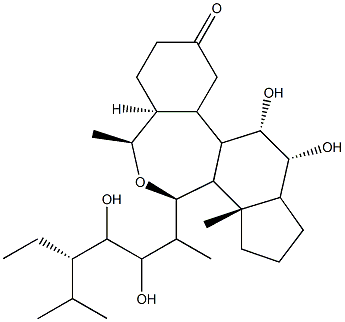
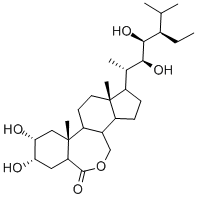
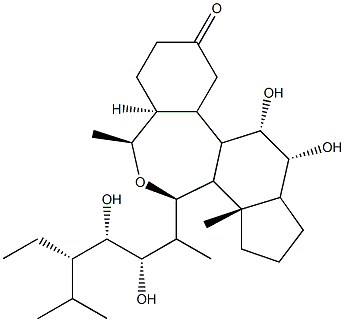
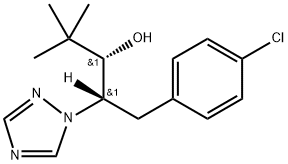

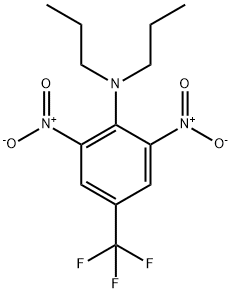
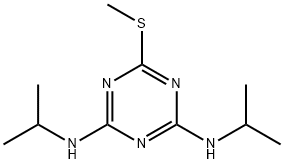

You may like
-
 Epibrassinolide CAS 78821-43-9View Details
Epibrassinolide CAS 78821-43-9View Details
78821-43-9 -
 2033-24-1 98%View Details
2033-24-1 98%View Details
2033-24-1 -
 1975-50-4 98%View Details
1975-50-4 98%View Details
1975-50-4 -
 2-HYDROXY BENZYL ALCOHOL 98%View Details
2-HYDROXY BENZYL ALCOHOL 98%View Details
90-01-7 -
 2-Chloro-1,3-Bis(Dimethylamino)Trimethinium Hexafluorophosphate 221615-75-4 98%View Details
2-Chloro-1,3-Bis(Dimethylamino)Trimethinium Hexafluorophosphate 221615-75-4 98%View Details
221615-75-4 -
 61397-56-6 CIS BROMO BENZOATE 98%View Details
61397-56-6 CIS BROMO BENZOATE 98%View Details
61397-56-6 -
 14714-50-2 (2-Hydroxyphenyl)acetonitrile 98+View Details
14714-50-2 (2-Hydroxyphenyl)acetonitrile 98+View Details
14714-50-2 -
 118753-70-1 98+View Details
118753-70-1 98+View Details
118753-70-1